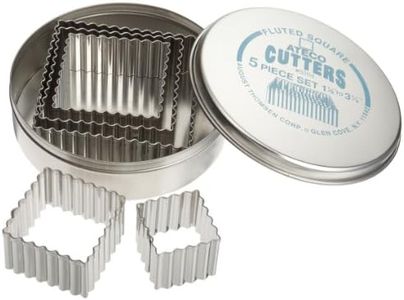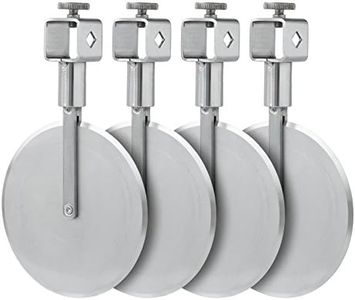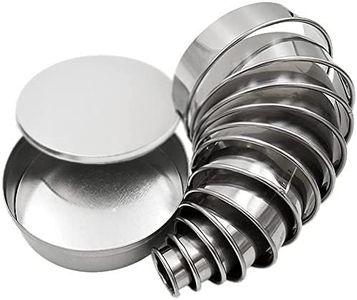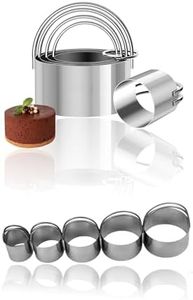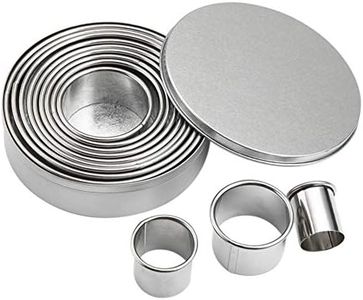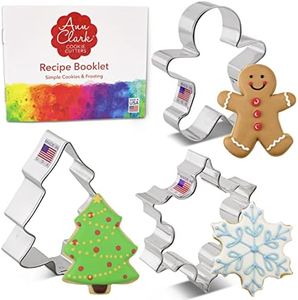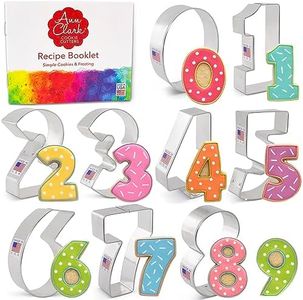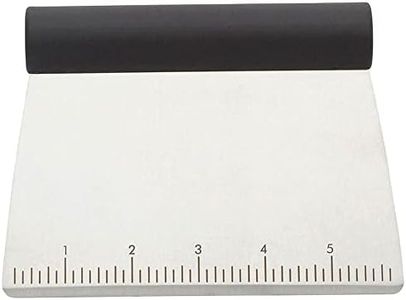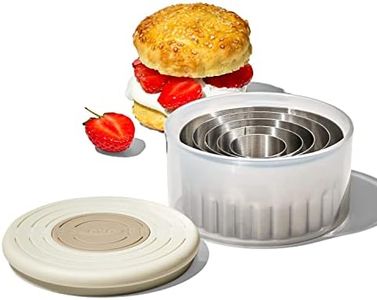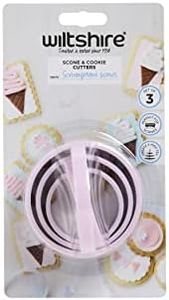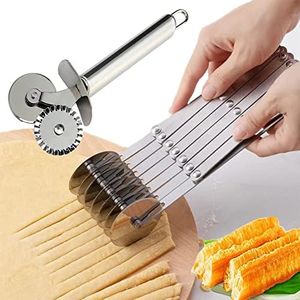We Use CookiesWe use cookies to enhance the security, performance,
functionality and for analytical and promotional activities. By continuing to browse this site you
are agreeing to our privacy policy
10 Best Pastry Cutters
From leading brands and best sellers available on the web.Buying Guide for the Best Pastry Cutters
Choosing the right pastry cutter can help you achieve consistent, professional results whether you're baking pies, biscuits, or pastries. A good pastry cutter lets you blend fat into flour quickly and comfortably, helping you create perfect, flaky textures. When shopping for a pastry cutter, focus on factors that affect ease of use, durability, and suitability for the types of pastries you plan to prepare.Blade MaterialThe blade material of a pastry cutter is crucial because it determines how easily and efficiently the cutter blends ingredients. Most pastry cutters feature stainless steel or plastic blades. Stainless steel is strong, sharp, and rust-resistant, making it easy to cut through cold butter and other fats. Plastic blades are gentler on bowls but generally less effective for tougher tasks. Opt for stainless steel if you often make pastries requiring precise, quick mixing, while plastic could suffice for occasional or lighter use.
Handle Comfort and MaterialHandle comfort affects how enjoyable and easy your baking process will be, especially if you do a lot of pastry work. Handles come in materials such as wood, plastic, or rubberized grips. A comfortable, ergonomic handle reduces hand fatigue, and a non-slip material helps maintain grip even when hands are wet. If you have weaker grip strength or plan on making large batches, look for a cushioned or contoured handle for extra comfort.
Blade Design and NumberBlade design can impact how efficiently a pastry cutter combines ingredients. Most pastry cutters have several parallel blades—usually between four and six. More blades generally mean faster, finer mixing, but they may require more force. Some cutting blades are slightly curved to make rocking motions easier. If you like a very fine crumb or want to be quick, look for more blades; for chunkier textures or less effort, fewer blades may be preferable.
Ease of CleaningSince pastry cutters come into contact with butter and dough, cleaning can be a concern. Some are dishwasher-safe while others need to be washed by hand. Stainless steel cutters are usually the easiest to clean, as dough doesn’t stick as much and they handle dishwashers well. If easy cleanup matters to you, check if the cutter is dishwasher-safe and has no hard-to-reach crevices where dough could get trapped.
SizePastry cutters come in various sizes, both in handle width and cutter height. A larger cutter can cover more surface area at once, making it ideal for larger mixing bowls and bigger batches, while a smaller cutter might be easier to handle and control for small quantities or tight spaces. Choose the size based on your typical baking projects and the size of your hands and mixing bowls.

